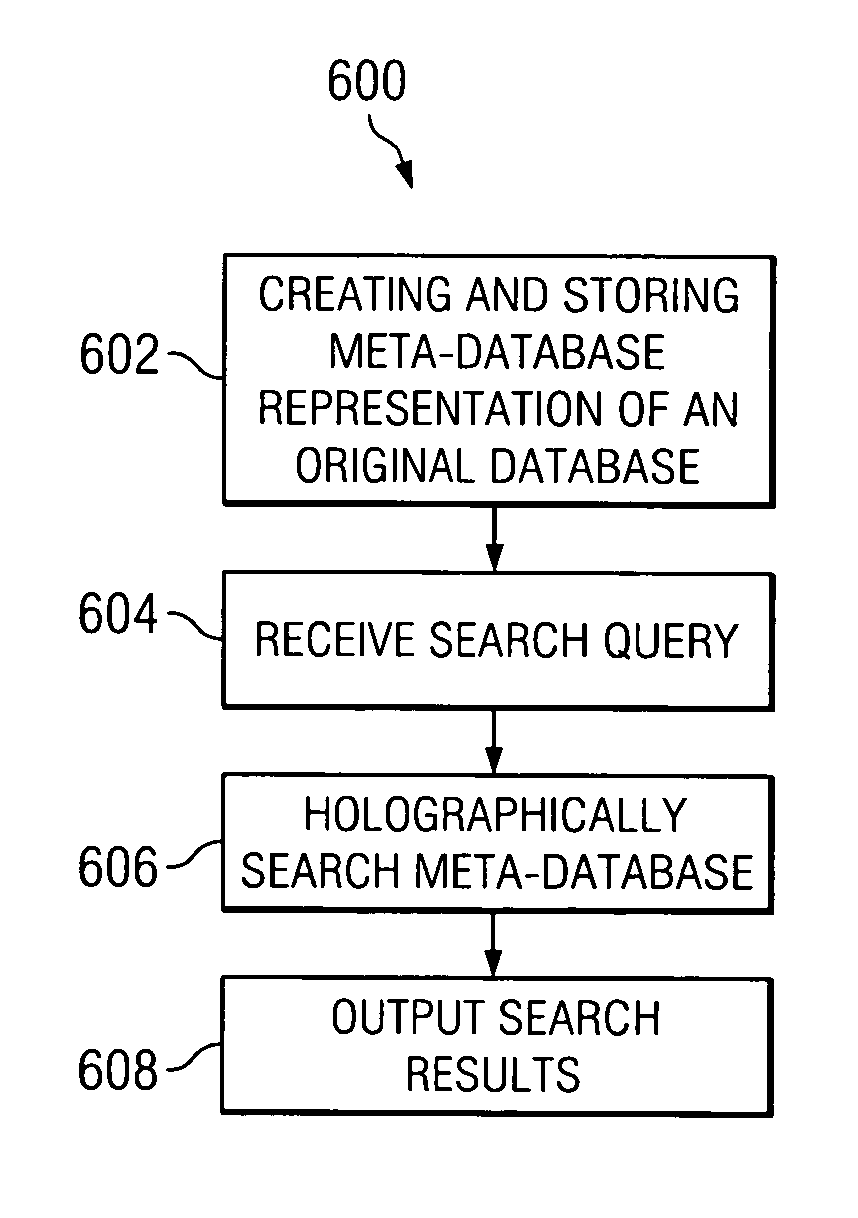Holographic correlator for data and metadata search
a correlator and data technology, applied in the field of optical data storage and database search, can solve the problems of limited speed, severe limitations of digital electronic search, database indexing, etc., and achieve the effect of reducing the noise of the correlator system, optimizing search performance, and increasing the dynamic range of the detection system
- Summary
- Abstract
- Description
- Claims
- Application Information
AI Technical Summary
Benefits of technology
Problems solved by technology
Method used
Image
Examples
Embodiment Construction
[0031]To circumvent the tradeoffs existing between storage capacity and search signal-to-noise ratio and throughput, and also the tradeoffs between the data page encoding techniques required to optimize storage capacity for address-based data storage and retrieval systems on the one hand, and those required to optimize holographic correlative search systems on the other hand, the present invention provides a content-addressable optical data storage system architecture which is primarily optimized with respect to search performance.
[0032]In a first aspect of the invention, a method for searching for data is provided whereby the search is performed not on the original data itself, but on a holographically stored structured representation thereof, while a bit-wise faithful representation of the original data itself is stored on a different data storage medium optimized for capacity and low bit-error rate retrieval.
[0033]An exemplary embodiment of structured data upon which the search i...
PUM
 Login to View More
Login to View More Abstract
Description
Claims
Application Information
 Login to View More
Login to View More - R&D
- Intellectual Property
- Life Sciences
- Materials
- Tech Scout
- Unparalleled Data Quality
- Higher Quality Content
- 60% Fewer Hallucinations
Browse by: Latest US Patents, China's latest patents, Technical Efficacy Thesaurus, Application Domain, Technology Topic, Popular Technical Reports.
© 2025 PatSnap. All rights reserved.Legal|Privacy policy|Modern Slavery Act Transparency Statement|Sitemap|About US| Contact US: help@patsnap.com



